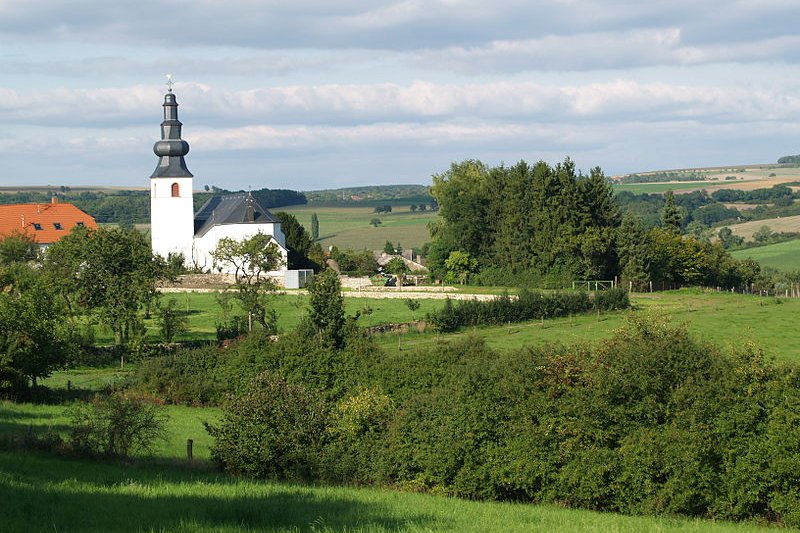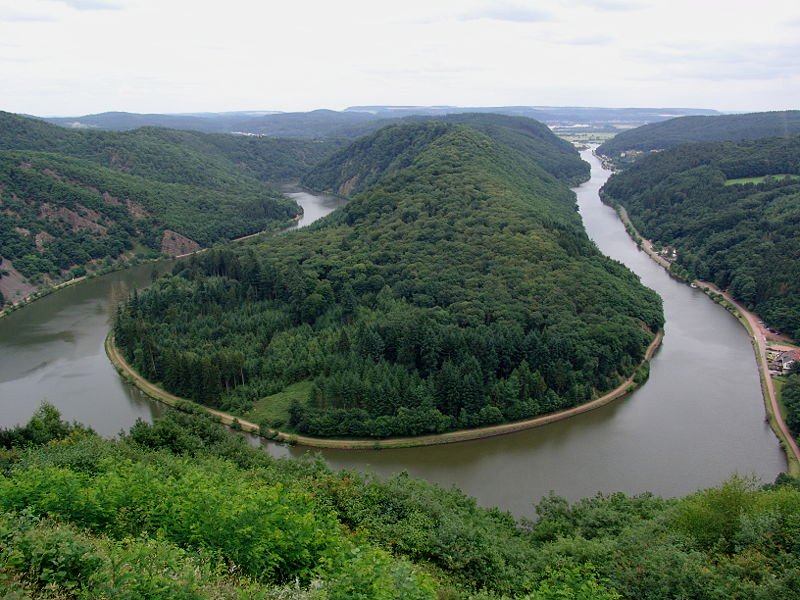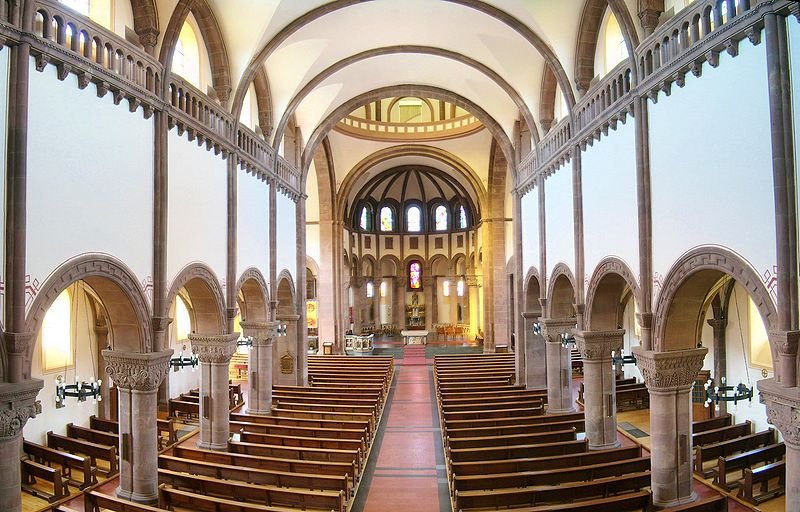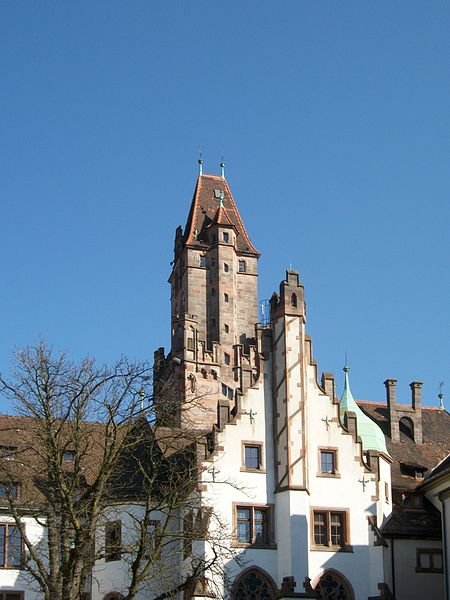 Leidingen, Saarland
Leidingen, SaarlandSource: https://commons.wikimedia.org/wiki/File:Leidingen.JPG
Author: A. Josef Dernbecher

Saarland is the smallest state of the Federal Republic of Germany, covering an area of just 2,568 sq km (991 sq mi), excluding city-states such as Berlin, Hamburg and Bremen. Saarland has a population of just over a million people.
 Saarscheife in Saarland
Saarscheife in SaarlandSource: https://commons.wikimedia.org/wiki/File:Saarschleife_2008.JPG
Author: Arno.Ho

Saarland is sandwiched between Rhineland-Palatinate to the east and France to the west. Its capital is Saarbrücken. One third of the state is still forested. The terrain is hilly, with the highest peak being Dollberg, at 695.4 m (2,280 ft).
Although the Saarland area has been inhabited since Roman times, when it was part of the province of Belgica, Saarland itself is quite a recent creation. It was only established in 1919 from territories belonging to Prussia and Bavaria.
 Cathedral of Saar interior view
Cathedral of Saar interior viewSource: https://commons.wikimedia.org/wiki/File:Saardom_innen_pano.jpg
Author: Lokilech

In ancient times, Saarland was inhabited by Celtic tribes. The Romans ruled it from the 1st century BC until the 5th century AD, after which it passed through numerous rulers including the Franks and the Holy Roman Empire.
Saarland was absorbed into the French Republic in 1798. However the French lost it when French Emperor Napoleon III attempted to seize Saarbrücken, and in the process, igniting the Franco-Prussian War of 1870-71. France lost that war, resulting in the Saar region being made part of the German Empire.
Saarland was under French Occupation following the Second World War. An independent Saarland was created in 1954, in an agreement between France and West Germany. However a plebiscite held the following year rejected full independence in favor of joining Germany. This was realised through the Saar Treaty on 27 October, 1956.
 Saarbrücken Town Hall
Saarbrücken Town HallSource: https://commons.wikimedia.org/wiki/File:20110302Rathaus_Saarbruecken06.jpg
Author: AnRo0002

Today Saarland is divided into six administrative districts namely Merzig-Wadern, Neunkirchen, Saarbrücken, Saarlouis, Saarpfalz and Sankt Wendel. The majority of the population, about 65%, are Catholics while the Evangelical churches of Rhineland and the Palatinate are followed by about 20% of the population. The people of Saarland speak a dialect of German known as Rhine Franconian. In addition to standard German, many of the people in Saarland are able to speak French, due to geographical proximity and cultural ties.
Visiting Saarland
You can fly to Saarbrücken Airport (SCN) or simply take a train to Saarland. There are direct train connections with Frankfurt and Paris.Cities of Saarland
World Heritage Site in Saarland
 Latest updates on Penang Travel Tips
Latest updates on Penang Travel Tips

Copyright © 2003-2025 Timothy Tye. All Rights Reserved.

 Go Back
Go Back